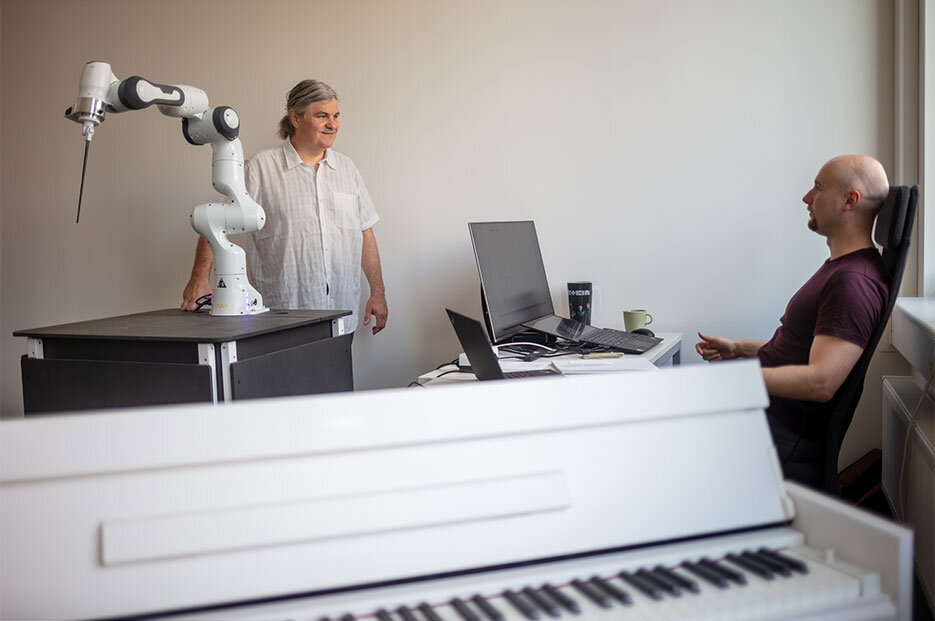A Revolutionary Step in Music: A Three-Armed Robot Conducts a German Orchestra
In a stunning blend of technology and art, a three-armed robot has made its debut as an orchestra conductor in Dresden, Germany. Trained to mimic the movements of a human maestro, this innovative machine directed talented musicians from the Dresdner Sinfoniker orchestra during two performances, showcasing music specifically composed to highlight the robot’s unique capabilities.
A Glimpse into the Future of Conducting
Imagine an orchestra with a conductor sporting three baton-like arms that move with remarkable independence. This extraordinary sight was brought to life in Dresden, where the robot conducted pieces like "Semiconductor’s Masterpiece," a composition by the talented Andreas Gundlach. The collaborative effort between Gundlach and scientists from the Technical University of Dresden, who specialize in "cobots"—robots designed to work collaboratively with humans—has opened new doors in the world of orchestral music.
The robot’s training involved mastering the timing of beats and dynamic expression, a process that took two painstaking years. Gundlach noted that working with the robot deepened his appreciation for the artistry inherent in human conductors. "It made clear to me in a totally new way what a wonderful creation a human being is," he expressed during the performance.
The Art of Conducting—Redefined
What sets this robot apart is its ability to coordinate multiple sections of the orchestra simultaneously. During the performances, two of its arms directed different groups of musicians, allowing for a complex interplay of musical tempos that would have been nearly impossible for a single human conductor to achieve.
Another notable piece, "#kreuzknoten" by Wieland Reissmann, further demonstrated the robot’s capabilities, where various instruments were played at distinct speeds. The audience was left enthralled, witnessing firsthand the synergy of advanced robotics and musical precision.
Embracing Technology in the Arts
The introduction of this robot conductor raises fascinating questions about the future of art and technology. While it serves as a tool to enhance performance, it also invites endless possibilities that can redefine creative expression. As more artists and technologists collaborate, the lines between human and machine become increasingly blurred, leading to an exciting future for both fields.
Still, one has to wonder: will this robot companion eventually take over the role of human conductors? The answer isn’t straightforward. Gundlach emphasizes that this robot isn’t meant to replace human conductors but to complement their artistry and skill. The respectful coexistence of humans and technology could enrich the music-making process rather than diminish it.
The Future Looks Bright
As we celebrate this technological accomplishment in Dresden, we can also reflect on its broader implications. Art and science have always intertwined, and with collaborative technologies like this robot, we are free to explore new territories in creative expression.
The AI Buzz Hub team is excited to see where these breakthroughs take us. Want to stay in the loop on all things AI? Subscribe to our newsletter or share this article with your fellow enthusiasts.




